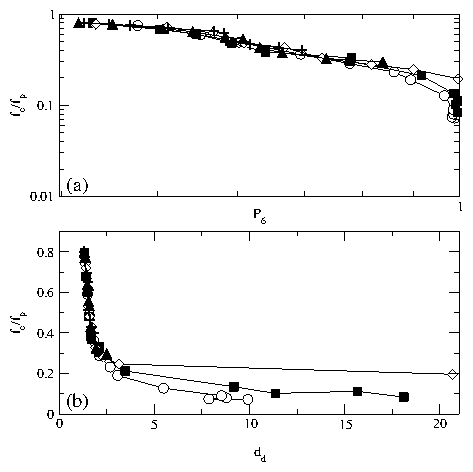 Figure 1:
The Delaunay triangulation of the vortex lattice for decreasing
vortex-vortex interaction strength Av in a sample
with fp = 0.25f0.
Dark circles indicate 5-fold coordinated vortices; open circles
indicate 7-fold coordinated vortices.
(a) Av = 4.0,
(b) 3.0, (c) 2.0, (d) 1.0, (e) 0.75 and (f) 0.50.
The vortex lattice is relatively ordered in (a).
In (b) more defects appear. (c) and (d) show
different domains of vortex orientation.
In (e) and (f) the vortex lattice is highly disordered.
Figure 1:
The Delaunay triangulation of the vortex lattice for decreasing
vortex-vortex interaction strength Av in a sample
with fp = 0.25f0.
Dark circles indicate 5-fold coordinated vortices; open circles
indicate 7-fold coordinated vortices.
(a) Av = 4.0,
(b) 3.0, (c) 2.0, (d) 1.0, (e) 0.75 and (f) 0.50.
The vortex lattice is relatively ordered in (a).
In (b) more defects appear. (c) and (d) show
different domains of vortex orientation.
In (e) and (f) the vortex lattice is highly disordered.
|

